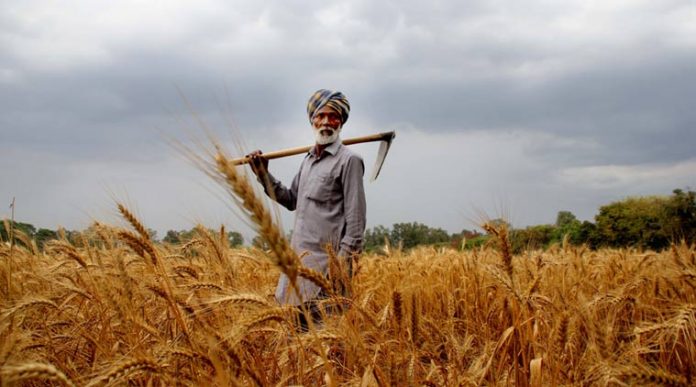This article is written by Mudita who is pursuing a Diploma in Business Laws for In-House Counsels from LawSikho.
Table of Contents
Introduction
It has been a hundred plus days since the farmers are protesting over the farm laws that the government has passed. One of the core issues of the protest is the provision of the Minimum Support Price (“Minimum Support Price”). So what is the Minimum Support Price? With relation to agricultural produce, the MINIMUM SUPPORT PRICE is the predetermined price of certain crops before the sowing period. It is announced by the government bi-annually, before the Kharif and the Rabi season.
These prices are determined by the Government of India in consultation with the Commission for Agriculture Costs and Prices (“CACP”). This change has been brought about by the Government to prevent loss for farmers because of sharp fall in crop price. Minimum Support Price is a sort of guarantee provided by the government to the farmers. In case the market price for the commodity falls below the announced minimum price due to bumper production and glut in the market, government agencies purchase the entire quantity offered by the farmers at the announced Minimum Support Price. Although in practice for over five decades Minimum Support Price does not find a place in any law being in force.
History of Minimum Support Price
The concept was introduced in 1960s-1970s, to the farmers of Punjab and Haryana to provide them with an incentive to grow rice and wheat. Our country was facing an excessive shortage of cereals. This led to the formation of new agricultural policies and also led to the onset of the Green Revolution. In 1964, the Food Corporation of India (“FCI”) was set up by the government to procure produce from the farmers at a lucrative price, then to distribute the produce through the public distribution system.
In order to advise on the price at which this produce should be bought, in 1965 the Agricultural Prices Commission was set up. This led to the introduction of a base price below which the price of the produce cannot fall. If the farmer is unable to sell his produce, the government will buy it at this minimum price, known as Minimum Support Price. Minimum Support Price was introduced to provide financial stability to the famers and to boost agriculture in India. Currently, there are about 23 crops that fall within the purview of Minimum Support Price, some of which are:
- Cotton.
- Jute.
- Paddy.
- Wheat.
- Barley.
- Jowar.
- Bajra.
- Maize.
- Ragi.
- Gram pulse.
- Tur pulse.
- Moong.
- Urad.
- Lentil.
- Groundnut.
- Mustard.
- Soyabean.
- Sunflower seed.
- Sugarcane etc.
While determining the Minimum Support Price, the government looks into multiple factors, such as:
- Production costs.
- Input prices.
- Market price trends.
- Demand and supply.
- Inter-crop price parity.
- Industrial cost structure.
- Cost of living.
- International price levels.
- Difference between price paid in the market vis a vis price received by the farmers.
- Per hector cultivation cost.
- Price of production in various parts of the country.
- Supply data which includes area yield, production, domestic availability, exports.
- Demand data which includes total and per capita consumption, trend, processing industry’s capacity.
- Marketing costs including storage, transport.
Any change to be brought about in government policies comes with its own set of advantages and disadvantages. The Farm Law is no exception to this. Ever since the advent of the farm bill, the change has been well received by some while heavily criticized by others. The intention behind the farm laws is said to provide some relief and fair price to the farmers who live a life of hardship and are taken advantage of by the wholesalers of the food chain. The three bills passed by the government do not mandate Minimum Support Price, the government has explained through various statements that the intent behind the law is to offer a fair market and improve the situation of the suffering farmers but that has not eased out the concerns of the farmers.
Pros of Minimum Support Price
Some of the advantages of the Minimum Support Price are in the form of one price policy, i.e. there is no disparity in payment, it also gives the farmers an assurance of getting a price for their cultivation. As seen above the Minimum Support Price is determined by keeping multiple factors into consideration thus not leaving the farmers at the mercy of just the demand of the market. This also paves the way for alternate government initiatives such as food security, buffer stock etc. The Minimum Support Price is constantly revised and updated thus helping the farmers grow and enable them to earn a decent living income for themselves.
Cons of Minimum Support Price
This is a rising concern of the farmers that although they have the freedom to directly sell their produce to the private entities, in the absence of Minimum Support Price they could be exploited by the corporate giants since there is no linkage of Minimum Support Price with sale to private entities. Which would ultimately result in the exploitation of the small-time farmers.
We have often seen that in our country the law and the practical reality are more often than not two different scenarios. A farmer mentioned that although the Minimum Support Price of maize crop was INR 1850 per quintal but in the markets of Madhya Pradesh it continued to be sold at INR 1000 per quintal, which caused great loss to the farmers. This was just an example of one crop; however, such parity exists in all farm produce, which is also why farmer suicides in India are always on the rise.
According to a report by the Organization of Economic Cooperation Development and the Indian Council of Agricultural Research (OECD-ICAIR), the farmers have lost INR 45 lakh crore due to non-proper pricing of the product between 2000 and 2017.
If statistics are to be believed, currently more than 95% of the farmers in the country do not avail the benefit of Minimum Support Price. This is caused due to multiple factors such as lack of awareness about the existence of Minimum Support Price, reluctance to use the designated mandis, inadequate farm size etc. These are the farmers who fail to get sufficient returns on their investment since they lack the basic infrastructure for storage and transportation.
When quizzed a farmer admitted he was aware of the government having fixed a base price for the crop before the owing season however he was unaware of what the price was. This is one major downside for Minimum Support Price since its reach is to less than 6% of the farmers, the majority share of farmers would be unable to take the benefit of this scheme.
Yet another downside of Minimum Support Price is that it is set by the Central Government countywide, however, India being such a vast nation geographically with different terrains the costs are variable in each geography. To illustrate with an example, while cultivating maize in one hectare, the cost of cultivation for the farmers of Jharkhand was INR 24, 716, for farmers of Maharashtra it was INR 51,408, for farmers of Karnataka was INR 28,220 and for farmers of Bihar was INR 32,262. The difference in cost of cultivation in each state is due to different wage rates prevailing in states. The Minimum Support Price for maize is INR 1850 for all. Not just the cost, but the produce output is also different for each state.
To resolve this issue, the State Government has the power to raise the Minimum Support Price for their particular states, however, it is seldom put to practice, and if put to practice is not free from controversies.
Conclusion
From the above, it can be inferred that the Minimum Support Price, although is prevalent since a long time, has failed to reach the vast majority of the farmers. I strongly believe that our country has some wonderful laws in place but what we lack is implementation and awareness of the same. The ever-exploited farmers in the absence of Minimum Support Price will further be exploited at the hands of the wealthy corporates.
Students of Lawsikho courses regularly produce writing assignments and work on practical exercises as a part of their coursework and develop themselves in real-life practical skill.
LawSikho has created a telegram group for exchanging legal knowledge, referrals and various opportunities. You can click on this link and join:
 Serato DJ Crack 2025Serato DJ PRO Crack
Serato DJ Crack 2025Serato DJ PRO Crack











 Allow notifications
Allow notifications



